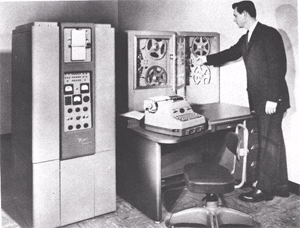
Second-generation computers were built between 1959 to 1963. These computers relied on a technology called transistors. These computers were easier to program, used high-level languages, and had magnetic cores and disks for memory.

Instead of vacuum tubes, second-generation computers used transistors—an exciting new invention at the time. John Barden, Walter Brattain and William Shockley of Bell Telephone Laboratories invented the transistor. A transistor is a small, solid-state component designed to monitor the flow of electric current.
Transistors were smaller, faster, cheaper, required less power, and produced less heat than vacuum tubes. Transistors made second-generation computers faster and more reliable than first-generation computers.

Besides increasing speed and enhancing reliability, transistors can amplify a signal, or open and close a circuit. In computers, a transistor functions as an electronic switch or bridge. Transistors play an important role in electronic circuits. Circuits help make up electronic systems, and electronic systems are what make electronic computing possible.
What innovations did the transistor make possible?
Transistors allowed second-generation computers to communicate over telephone lines. The transistor gave way to the concepts of parallel processor and multiprogramming. Unlike first-generation computers, second-generation computers could run multiple programs, and could address input and output at the same time.
